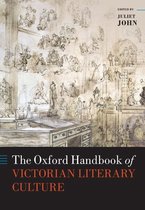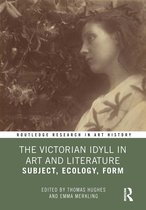Oxford Handbooks-The Oxford Handbook of Victorian Medievalism
Afbeeldingen
Sla de afbeeldingen overArtikel vergelijken
Uitgever: Oxford University Press
- Engels
- Paperback
- 9780198883340
- 22 juni 2023
- 720 pagina's
Oxford University Press
Oxford University Press had its origins in the information technology revolution of the late fifteenth century, which began with the invention of printing from movable type. The first book was printed in Oxford in 1478, only two years after Caxton set up the first printing press in England.
Despite this early start, the printing industry in Oxford developed in a somewhat haphazard fashion over the next century. It consisted of a number of short-lived private businesses, some patronized by the University. But in 1586 the University itself obtained a decree from the Star Chamber confirming its privilege to print books. This was further enhanced in the Great Charter secured by Archbishop Laud from King Charles I, which entitled the University to print 'all manner of books'.
The University established its right to print the King James Authorized Version of the Bible in the seventeenth century. This Bible Privilege formed the basis of a profitable business throughout the next two centuries and was the spur to OUP's expansion. A Bible warehouse was set up in London, which later grew into a major publisher of books with educational or cultural content aimed at the general reader. OUP then began to expand internationally, starting with the opening of an American office in 1896.
Oxford's traditions of religious and academic publication were followed in New York. The first book published by the American office was the Scofield Reference Bible in 1909. After it came The Life of Sir William Osler, which won the Pulitzer Prize in 1926. Six more Pulitzers, several National Book Awards, and over a dozen Bancroft Prizes in American history have followed since.
Since 1896, the business has changed considerably, with the growth and evolution of schools' publishing, particularly in the Branches; the introduction of English Language Teaching, Music, Journals, and Trade and General publishing; and the use of new technologies.
Samenvatting
Drawing on the expertise of more than 40 international contributors and covering literature, fine art, architecture, religion, politics, and social change, this Handbook examines the pervasive Victorian obsession with the culture of the Middle Ages.
In 1859, the historian Lord John Acton asserted: 'two great principles divide the world, and contend for the mastery, antiquity and the middle ages'. The influence on Victorian culture of the 'Middle Ages' (broadly understood then as the centuries between the Roman Empire and the Renaissance) was both pervasive and multi-faceted. This 'medievalism' led, for instance, to the rituals and ornament of the Medieval Catholic church being reintroduced to Anglicanism. It led to the Saxon Witan being celebrated as a prototypical representative parliament. It resulted in Viking raiders being acclaimed as the forefathers of the British navy. And it encouraged innumerable nineteenth-century men to cultivate the superlative beards we now think of as typically 'Victorian'—in an attempt to emulate their Anglo-Saxon forefathers. Different facets of medieval life, and different periods before the Renaissance, were utilized in nineteenth-century Britain for divergent political and cultural agendas. Medievalism also became a dominant mode in Victorian art and architecture, with 75 per cent of churches in England built on a Gothic rather than a classical model. And it was pervasive in a wide variety of literary forms, from translated sagas to pseudo-medieval devotional verse to triple-decker novels. Medievalism even transformed nineteenth-century domesticity: while only a minority added moats and portcullises to their homes, the medieval-style textiles produced by Morris and Co. decorated many affluent drawing rooms. The Oxford Handbook of Victorian Medievalism is the first work to examine in full the fascinating phenomenon of 'medievalism' in Victorian Britain. Covering art, architecture, religion, literature, politics, music, and social reform, the Handbook also surveys earlier forms of antiquarianism that established the groundwork for Victorian movements. In addition, this collection addresses the international context, by mapping the spread of medievalism across Europe, South America, and India, amongst other places.
In 1859, the historian Lord John Acton asserted: 'two great principles divide the world, and contend for the mastery, antiquity and the middle ages'. The influence on Victorian culture of the 'Middle Ages' (broadly understood then as the centuries between the Roman Empire and the Renaissance) was both pervasive and multi-faceted. This 'medievalism' led, for instance, to the rituals and ornament of the Medieval Catholic church being reintroduced to Anglicanism. It led to the Saxon Witan being celebrated as a prototypical representative parliament. It resulted in Viking raiders being acclaimed as the forefathers of the British navy. And it encouraged innumerable nineteenth-century men to cultivate the superlative beards we now think of as typically 'Victorian'—in an attempt to emulate their Anglo-Saxon forefathers. Different facets of medieval life, and different periods before the Renaissance, were utilized in nineteenth-century Britain for divergent political and cultural agendas. Medievalism also became a dominant mode in Victorian art and architecture, with 75 per cent of churches in England built on a Gothic rather than a classical model. And it was pervasive in a wide variety of literary forms, from translated sagas to pseudo-medieval devotional verse to triple-decker novels. Medievalism even transformed nineteenth-century domesticity: while only a minority added moats and portcullises to their homes, the medieval-style textiles produced by Morris and Co. decorated many affluent drawing rooms. The Oxford Handbook of Victorian Medievalism is the first work to examine in full the fascinating phenomenon of 'medievalism' in Victorian Britain. Covering art, architecture, religion, literature, politics, music, and social reform, the Handbook also surveys earlier forms of antiquarianism that established the groundwork for Victorian movements. In addition, this collection addresses the international context, by mapping the spread of medievalism across Europe, South America, and India, amongst other places.
Productspecificaties
Wij vonden geen specificaties voor jouw zoekopdracht '{SEARCH}'.
Inhoud
- Taal
- en
- Bindwijze
- Paperback
- Oorspronkelijke releasedatum
- 22 juni 2023
- Aantal pagina's
- 720
Betrokkenen
- Hoofdredacteur
- Joanne Parker
- Hoofduitgeverij
- Oxford University Press
Overige kenmerken
- Product breedte
- 171 mm
- Product hoogte
- 35 mm
- Product lengte
- 245 mm
- Studieboek
- Ja
- Verpakking breedte
- 171 mm
- Verpakking hoogte
- 35 mm
- Verpakking lengte
- 245 mm
- Verpakkingsgewicht
- 1222 g
EAN
- EAN
- 9780198883340
Je vindt dit artikel in
- Categorieën
- Taal
- Engels
- Stroming of stijl
- Victoriaans tijdperk
- Boek, ebook of luisterboek?
- Boek
- Periode
- ca. 1800-1910
Kies gewenste uitvoering
Bindwijze
: Paperback
Prijsinformatie en bestellen
De prijs van dit product is 50 euro en 99 cent.
Uiterlijk 28 mei in huis
Verkoop door bol
- Prijs inclusief verzendkosten, verstuurd door bol
- Ophalen bij een bol afhaalpunt mogelijk
- 30 dagen bedenktijd en gratis retourneren
- Dag en nacht klantenservice
Rapporteer dit artikel
Je wilt melding doen van illegale inhoud over dit artikel:
- Ik wil melding doen als klant
- Ik wil melding doen als autoriteit of trusted flagger
- Ik wil melding doen als partner
- Ik wil melding doen als merkhouder
Geen klant, autoriteit, trusted flagger, merkhouder of partner? Gebruik dan onderstaande link om melding te doen.









